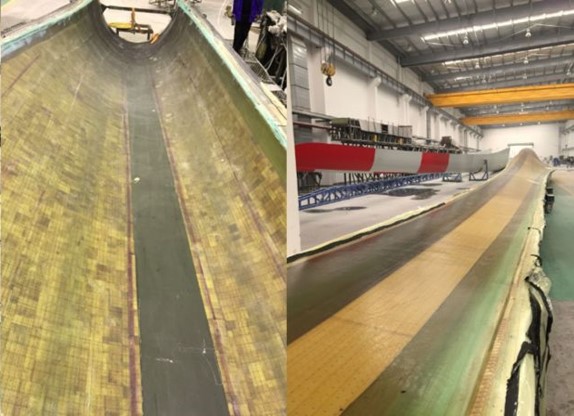Wind Energy Rotor Blade inspection
Detecting defects on the inner surface of the shell for a wind energy rotor balde
A feasibility analysis of implementing a Quality Inspection system for wind turbine blade shells using Computer Vision.
The study responds to Project objective to study the technical feasibility to use Computer Vision and Artificial Intelligence for inspections. Scope for analysis has been shell inspection after infusion and debagging according to given standards.
Fieldwork has been done on blade types at a production Plant. A large number of images has been taken and analysed. Pictures correspond basically to standard structures and also to defects like LAV, LDL, foreign objects, etc. present in production shells.
Image processing algorithms tested through the feasibility study proved efficient in locating and identifying defects on the shell surface. Studied image analysis techniques show that different defects change the image contents in different ways which show to be detectable. However due to the variety of basic surface structures and significant variation in the appearance of the defects on these, it is concluded that these conventional image processing algorithms are not sufficient to detect all types of defects and classify them. Therefore, the feasibility study concludes that there is a need to adapt a machine learning approach. In the approach, the system learns from experienced operators to classify and categorize new types and variations of defects, as well as new variations of basic surface structures. The system accumulates learned knowledge and the need for teaching the system declines rapidly as function of number of correct training sessions. The machine-learning scheme provides a robust method to detect all types of defects invariant to their scale and rotation as well as light variations and variations of structural backgrounds even in the presence of normal artifacts on the shell surface.

